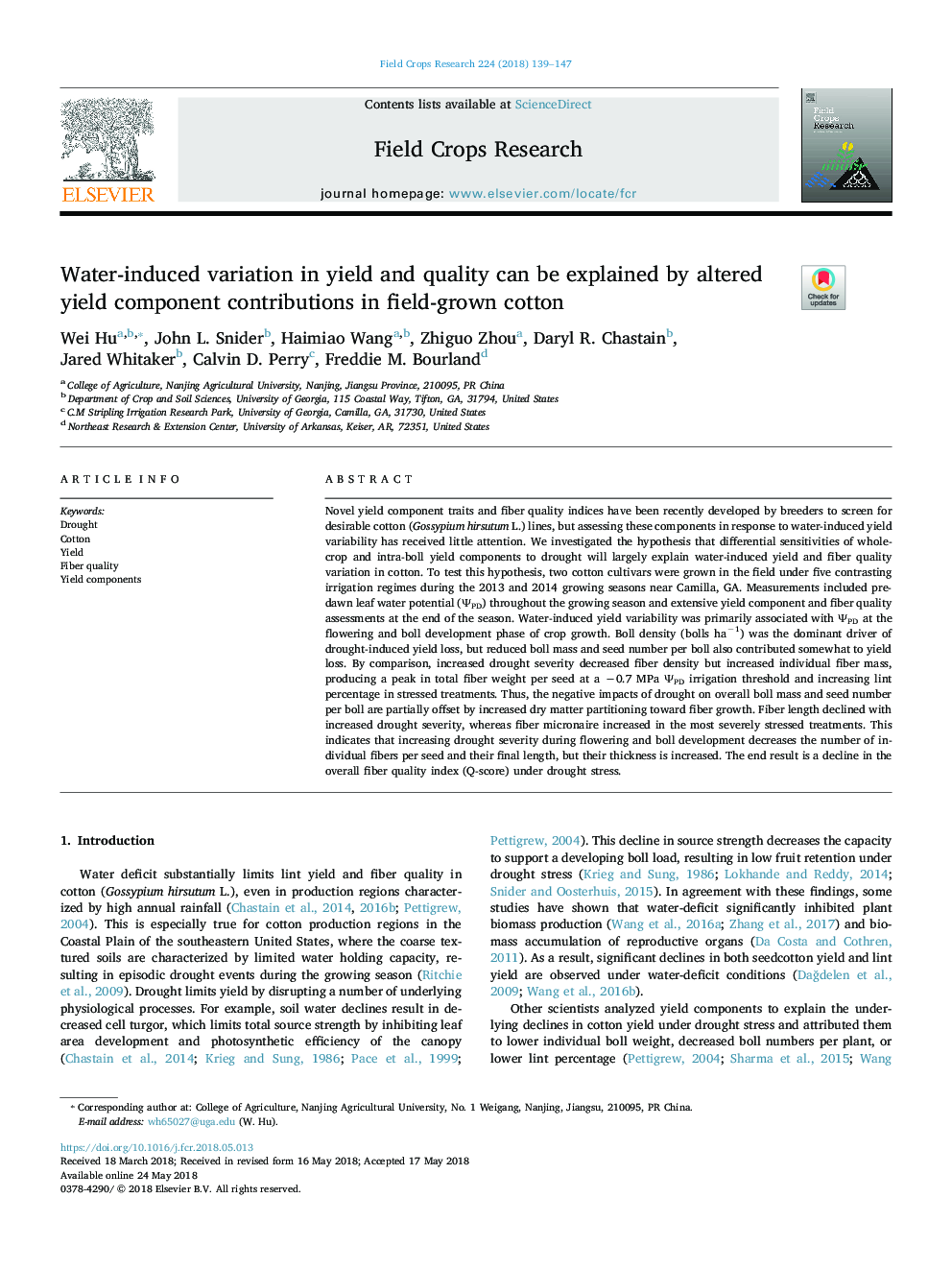| کد مقاله | کد نشریه | سال انتشار | مقاله انگلیسی | نسخه تمام متن |
|---|---|---|---|---|
| 8879125 | 1624639 | 2018 | 9 صفحه PDF | دانلود رایگان |
عنوان انگلیسی مقاله ISI
Water-induced variation in yield and quality can be explained by altered yield component contributions in field-grown cotton
ترجمه فارسی عنوان
تنوع در عملکرد و کیفیت آب ناشی از آب می تواند با کمک هزینه های ممتد مقادیر تولید شده در پنبه های تولید شده در منطقه به دست آمده
دانلود مقاله + سفارش ترجمه
دانلود مقاله ISI انگلیسی
رایگان برای ایرانیان
کلمات کلیدی
خشکی، پنبه، بازده، کیفیت فیبر، اجزای عملکرد،
موضوعات مرتبط
علوم زیستی و بیوفناوری
علوم کشاورزی و بیولوژیک
علوم زراعت و اصلاح نباتات
چکیده انگلیسی
Novel yield component traits and fiber quality indices have been recently developed by breeders to screen for desirable cotton (Gossypium hirsutum L.) lines, but assessing these components in response to water-induced yield variability has received little attention. We investigated the hypothesis that differential sensitivities of whole-crop and intra-boll yield components to drought will largely explain water-induced yield and fiber quality variation in cotton. To test this hypothesis, two cotton cultivars were grown in the field under five contrasting irrigation regimes during the 2013 and 2014 growing seasons near Camilla, GA. Measurements included predawn leaf water potential (ΨPD) throughout the growing season and extensive yield component and fiber quality assessments at the end of the season. Water-induced yield variability was primarily associated with ΨPD at the flowering and boll development phase of crop growth. Boll density (bolls haâ1) was the dominant driver of drought-induced yield loss, but reduced boll mass and seed number per boll also contributed somewhat to yield loss. By comparison, increased drought severity decreased fiber density but increased individual fiber mass, producing a peak in total fiber weight per seed at a â0.7 MPa ΨPD irrigation threshold and increasing lint percentage in stressed treatments. Thus, the negative impacts of drought on overall boll mass and seed number per boll are partially offset by increased dry matter partitioning toward fiber growth. Fiber length declined with increased drought severity, whereas fiber micronaire increased in the most severely stressed treatments. This indicates that increasing drought severity during flowering and boll development decreases the number of individual fibers per seed and their final length, but their thickness is increased. The end result is a decline in the overall fiber quality index (Q-score) under drought stress.
ناشر
Database: Elsevier - ScienceDirect (ساینس دایرکت)
Journal: Field Crops Research - Volume 224, 1 July 2018, Pages 139-147
Journal: Field Crops Research - Volume 224, 1 July 2018, Pages 139-147
نویسندگان
Wei Hu, John L. Snider, Haimiao Wang, Zhiguo Zhou, Daryl R. Chastain, Jared Whitaker, Calvin D. Perry, Freddie M. Bourland,
